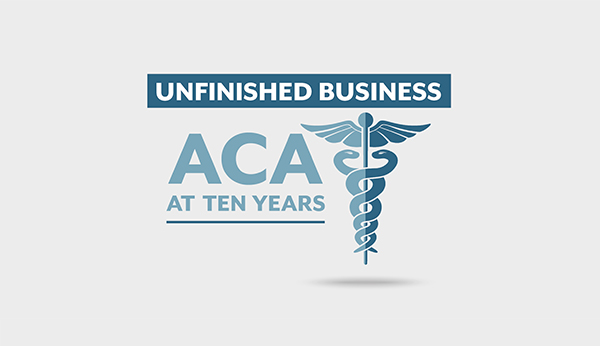
ACA at 10 Years: Colorado’s Remaining Uninsured
Major provisions of the ACA that went into effect in 2014 drastically increased the number of people with health care coverage in Colorado.
These include the expansion of Medicaid to nearly all Coloradans with incomes at or below 138 percent of the Federal Poverty Level (FPL) and offering subsidies for people with incomes between 139 and 400 percent of FPL who buy their insurance on the state's individual marketplace. CHI’s Colorado Health Access Survey (CHAS) found that between 2013 and 2015, the state’s uninsured rate dropped from 14.3 percent to 6.7 percent, leveling off at around 6.5 percent, where it remains today.
But despite these gains, an uninsured rate of 6.5 percent means that roughly 361,000 Coloradans still go without coverage. People without insurance have less access to care, receive lower quality care, and have worse overall health outcomes than those with health insurance.
In this first chapter analyzing the impact of the ACA, CHI profiles the remaining uninsured.
The uninsured in Colorado are disproportionately likely to identify as Hispanic or Latinx. Hispanic or Latinx Coloradans account for a fifth of the state’s overall population, but nearly a third of the uninsured population. This longstanding disparity is due to a mix of socioeconomic and historic factors, including the impact of regulations like the public charge, which may discourage families of immigrants from enrolling in public programs.
Disparities by age persist as well. Coloradans ages 19 to 64 make up slightly more than 60 percent of the state’s population, but account for 84 percent of the uninsured. Coverage expansion efforts have historically focused on children and older adults: The vast majority of adults 65 and older are enrolled in Medicare, while children in households making up to 260 percent FPL are eligible for Colorado’s Medicaid or Child Health Plan Plus (CHP+) programs. Older adults and children may be the focus of policy attention because they are perceived as more vulnerable, leaving Coloradans ages 19 to 64 more likely to go without coverage.
Most uninsured Coloradans are eligible to enroll in existing public coverage options or take advantage of subsidy options in the individual market. More than a quarter (27 percent) of the uninsured have incomes that qualify them for Medicaid or CHP+. Reasons these Coloradans remain uninsured may include a lack of knowledge about the programs or the personal choice not to enroll, perhaps because of beliefs about public programs. Subsidies for individual market coverage are available to another 28 percent of the uninsured, but this financial assistance may not be enough to cover the real costs of insurance premiums.
Nearly a quarter (24 percent) of the uninsured are immigrants without documentation—a status that currently disqualifies them from Medicaid or CHP+ coverage and private insurance subsidies. The remaining 21 percent are offered an affordable insurance plan through their employer (one that costs less than 9.7 percent of their annual household income) but choose not to enroll in it, or do not qualify for subsidies because they make more than 400 percent of FPL. Recent efforts in Colorado like House Bill 18-1205, which would have provided subsidies to those earning between 400 and 500 percent of FPL, have failed.
But while Colorado’s uninsured rate has remained stubbornly static since 2015, the state legislature is gearing up to debate initiatives like reinsurance and the public option in the 2020 legislative session, ensuring that the goal of expanding access to insurance will remain on the policy agenda.
Ideally, all Coloradans would be insured and have access to the medical care they need. As it stands, covering the remaining uninsured will be no small feat. Ten years after the ACA’s passage, bringing health coverage to more Coloradans will require understanding and addressing the unique reasons different Coloradans and communities are uninsured.
Next week, CHI dives deeper into Medicaid expansion and how it has impacted coverage rates in Colorado.


